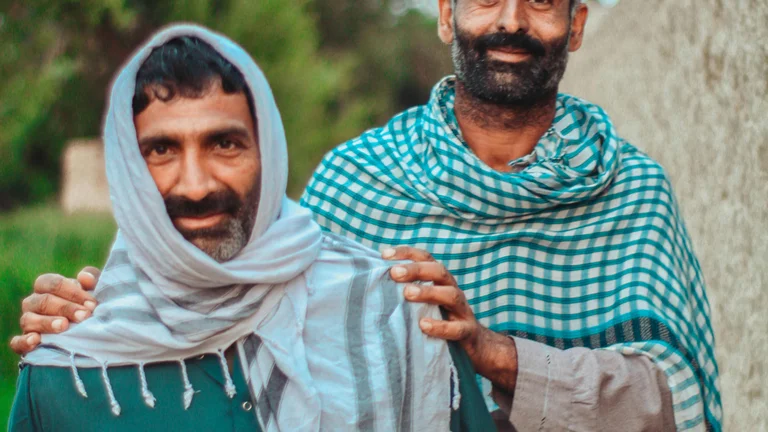
Asian dramas have cultivated a rich tapestry of storytelling elements that reach far beyond romantic entanglements. One of the most engaging components is the portrayal of bromances—deep, affectionate friendships between male characters. These relationships delve into loyalty, vulnerability, humor, and shared growth, often becoming a cornerstone for plot development and emotional investment. Heartwarming bromances in Asian dramas capture the essence of camaraderie and redefine expressions of male friendship, defying outdated stereotypes. This article explores the most memorable bromances across various Asian drama industries, examines their narrative importance, and highlights how they contribute to the broader cultural impact of these dramas.
The appeal of bromances in Asian dramas lies in their portrayal of genuine human connection—trust, sacrifice, and support—that resonates with audiences regardless of age or background. These relationships often balance tenderness and strength, demonstrating that male friendships can be intricate and meaningful. Unlike typical portrayals that may emphasize rivalry or superficial bonding, these bromances introduce nuanced depictions of emotional openness and mutual understanding that are sometimes rare in mainstream media.
The Cultural Context and Technical Fabric of Bromances in Asian Dramas
Asian dramas originate in diverse cultural contexts—Korea, Japan, China, Taiwan, and Thailand, each bringing unique storytelling traditions and social values. Bromances reflect both universal themes and localized interpretations of masculinity and friendship. For example, Korean dramas (K-dramas) tend to highlight loyalty and quiet emotional support, often presenting close friends who share unspoken bonds shaped by shared hardships and societal pressures. In contrast, Japanese dramas (J-dramas) might incorporate more understated and subtle expressions of friendship, sometimes using humor or restrained gestures to reveal emotional depth. Chinese dramas (C-dramas) often root bromances in historical or fantasy settings, intertwining friendship with themes of honor, duty, and brotherhood.
Technically, these bromances are crafted through a combination of writing, acting, direction, and cinematography that emphasize nonverbal communication, small gestures, and shared moments that convey trust and affection without overt declarations. Dialogue often includes inside jokes or references to shared history, strengthening the authenticity of the relationship. Directors use lingering shots, parallel framing, and symbolic props to subtly underline the bonds between characters, inviting audiences to read between lines and interpret deeper layers of connection. This multidimensional approach adds texture and realism to bromances.
Key Examples of Heartwarming Bromances in K-Dramas
Korean dramas have popularized bromances thanks to their focused character development and emotional storytelling. Several bromances have stood out, capturing viewers’ hearts with their sweetness, humor, and emotional complexity.
One iconic example is the friendship between Gu Jun-Pyo and Yoon Ji-Hoo in "Boys Over Flowers." Despite socio-economic differences and romantic tensions, their mutual respect and loyalty provide emotional grounding. Ji-Hoo’s consistent support of Jun-Pyo’s growth reflects a protective and brotherly dynamic rather than competition.
Another celebrated bromance appears in "Reply 1988," where the multiple-layered friendship among five male protagonists reveals the subtleties of long-term camaraderie. Their dynamic shows how shared history shapes personalities and relationships, from petty quarrels to profound support in times of crisis. Their interactions highlight how friendship can be both everyday and extraordinary simultaneously.
In "Itaewon Class," the relationship between Park Sae-Ro-Yi and Jang Geun-Won initially has tension but evolves into mutual respect and alliance. The way Sae-Ro-Yi surrounds himself with loyal friends who support his vision while nurturing emotional openness showcases a more modern and empowering bromance model.
These K-drama bromances emphasize emotional vulnerability, evolving trust, and reciprocal sacrifices. They help broaden cultural narratives about male friendships, encouraging audiences to appreciate emotional expressiveness.
Compelling Bromances from J-Dramas That Define Emotional Resonance
Japanese dramas tend to portray bromances with an introspective tone, focusing on nuanced emotional interactions rather than overt displays of affection. One striking bromance lies in "Waterboys," where male friends support each other’s unconventional aspirations and embrace collective challenges with humor.
"Nodame Cantabile," portrayed a unique bromance between Shinichi and Chiaki, characterized by contrasting personalities that complement rather than compete. Their friendship demonstrates how differences foster growth and emotional security.
Unlike some other drama cultures, Japanese bromances often emphasize subtlety and implicit care conveyed through small gestures such as shared meals, moments of silence, or thoughtful actions. This restrained approach reflects cultural values around emotional expression, highlighting that caring can be quiet and dignified.
Noteworthy Bromances in Chinese Dramas: Tradition, Fantasy, and Brotherhood
Chinese dramas present bromances in both contemporary and historical/fantasy settings, often linking friendship with ideals of loyalty, honor, and duty. Dramas like "The Untamed" display bromances that blend emotional depth with epic narrative stakes.
The relationship between Wei Wuxian and Lan Wangji in "The Untamed" stands as a masterpiece of bromance storytelling. Rooted in shared trials, mutual respect, and unwavering support, their bond evolves amidst high tension and mystical challenges. Their bromance is rich with symbolism, emotional vulnerability, and unspoken devotion, appealing widely and contributing to expanding genre trends.
In more modern dramas like "Go Go Squid!" bromances showcase friendship with humor and support, paralleling romantic plotlines yet holding their own emotional weight. Characters often serve as anchors for main protagonists, providing grounding and comic relief, which humanizes the story and adds balance.
Thai Dramas: Bromances with Humor and Heart
Thai dramas, known for their light-hearted and emotive storytelling, frequently incorporate bromances that emphasize camaraderie, loyalty, and shared growth. The friendship between characters in dramas such as "SOTUS: The Series" highlights boyhood connections transforming into deep emotional bonds that balance humor and vulnerability.
These bromances often include rites of passage, competitive rituals, and physical closeness infused with emotional warmth. The combination of playfulness and serious emotional moments resonates with viewers, showcasing male friendships as multidimensional and nourishing.
Classification and Characteristics of Heartwarming Bromances
While bromances vary across regions and storylines, certain characteristics define the most heartwarming relationships. These include emotional honesty, unwavering loyalty, mutual support during conflicts or crises, and shared growth that enriches both individuals. Bromances often combine humor and tender moments, balancing lightness with profound emotion. They defy macho stereotypes by allowing characters to display sensitivity and affection.
Below, a table illustrates common bromance traits found in notable Asian dramas and examples illustrating each characteristic:
| Characteristic | Description | Drama Example |
|---|---|---|
| Unwavering Loyalty | Friends stand by each other despite obstacles, social differences, or conflicts. | Wei Wuxian and Lan Wangji (The Untamed) |
| Emotional Vulnerability | Open sharing of fears, doubts, and personal struggles strengthens bonds. | Gu Jun-Pyo and Yoon Ji-Hoo (Boys Over Flowers) |
| Shared History | Long-term friendship marked by collective experiences, shaping identity. | Reply 1988 group of friends |
| Humor and Playfulness | Friendly teasing and jokes that create joy and ease in interaction. | Sosesuke and Shinichi (Waterboys) |
| Mutual Growth | Friends push each other to grow emotionally, socially, or professionally. | Park Sae-Ro-Yi and Jang Geun-Won (Itaewon Class) |
How Bromances Enhance Narrative and Audience Engagement
Bromances serve a multi-functional role in Asian dramas, enriching storytelling by expanding character depth and introducing alternate relational dynamics beyond romance. They allow writers to explore themes of loyalty, identity, and personal growth with nuance. By showing male characters with complex emotional bonds, dramas offer audiences relatable and refreshing portrayals of friendship.
From a narrative perspective, bromances create tension, comic relief, and emotional resonance. Conflicts within friendships add layered drama, while moments of reconciliation highlight healing. Bromances also balance romantic plotlines, sometimes providing a safe emotional haven or contrast to more turbulent relationships. Viewers, particularly younger audiences, find these representations affirming, as they mirror evolving societal attitudes about emotional openness among men.
For instance, in "Itaewon Class," bromances strengthen the protagonist’s mission and highlight values of solidarity and trust. Friendship becomes not only a subplot but a vital ingredient to the main storyline’s success. This interaction of plot and character demonstrates the integral role bromances play.
Steps to Analyze and Appreciate Bromances in Asian Dramas
To fully appreciate bromances, viewers can follow certain analytical approaches that enhance understanding and enjoyment:
- Observe nonverbal cues such as lingering touches, facial expressions, and proximity that signal emotional intimacy.
- Pay attention to dialogue layered with subtext, where characters speak indirectly about feelings or shared experiences.
- Consider cultural values influencing bromance depictions, including societal expectations of masculinity and friendship.
- Note character backstories and development arcs that elucidate why friendships are significant.
- Recognize how bromances provide counterpoints or support to romantic relationships or family dynamics.
By applying these steps, audiences can deepen emotional engagement and appreciate the craft behind these portrayals.
Impact of Bromances on Asian Drama Fandom and Popular Culture
The heartwarming bromances in Asian dramas have generated dedicated fan communities who celebrate and analyze these relationships in forums, social media, and fan fiction. Their popularity transcends screen time, influencing fan art, merchandise, and even language as fans adopt phrases from the shows.
Fandom response to bromances also reflects changing perspectives on masculinity and male emotional expression in Asia and globally. The widespread sharing and discussion of bromance moments highlight a desire for diverse and empathetic representations among audiences.
Moreover, these bromances encourage producers and writers to invest more in male friendships as substantial narrative elements, fostering creativity and innovation in the genre. This cyclical influence continues to enrich Asian drama content and audience experience.
Comparison of Bromance Portrayals Across Different Asian Drama Industries
The following comparative table summarizes bromance traits across Korean, Japanese, Chinese, and Thai dramas, highlighting variations and commonalities:
| Industry | Typical Settings | Emotional Expression | Common Themes | Notable Examples |
|---|---|---|---|---|
| Korean Dramas (K-Dramas) | Contemporary, school, workplace, urban | Open emotional vulnerability, direct communication | Loyalty, growth, sacrifice, mutual support | Boys Over Flowers, Reply 1988, Itaewon Class |
| Japanese Dramas (J-Dramas) | Contemporary, school, slice-of-life, subtle fantasy | Subtle, restrained, often implied care | Complementary differences, quiet support, humor | Waterboys, Nodame Cantabile |
| Chinese Dramas (C-Dramas) | Historical, wuxia, fantasy, modern urban | Expressive but often steeped in symbolism | Brotherhood, honor, loyalty, enduring bonds | The Untamed, Go Go Squid! |
| Thai Dramas | Contemporary, school, workplace, romantic | Emotional warmth with humor and playfulness | Rites of passage, transformation, camaraderie | SOTUS: The Series, Love By Chance |
Benefits of Exploring Bromances in Asian Drama Studies and Viewership
Understanding bromances in Asian dramas provides several advantages, both academically and as a viewer:
- Enhances cultural literacy by exploring gender norms and emotional expression in diverse societies.
- Offers insight into narrative techniques, enriching appreciation for storytelling strategies.
- Expands empathy by witnessing multifaceted male relationships beyond clichés.
- Provides role models for emotional openness and healthy friendships.
- Encourages critical engagement with media representations of masculinity and friendship.
These benefits contribute to a deeper, more fulfilling entertainment experience and inform cross-cultural understanding.
Practical Guide for New Viewers to Recognize and Enjoy Bromances in Asian Dramas
For newcomers to Asian dramas or bromance appreciation, here are step-by-step recommendations to identify and immerse in these relationships:
- Start with well-known dramas acclaimed for bromances, such as "The Untamed," "Reply 1988," or "Itaewon Class." Watch carefully to note interactions between male characters beyond storyline purposes.
- Focus on moments when characters support each other emotionally or physically, especially in quiet scenes without dialogue.
- Observe how characters’ attitudes evolve toward their friends over time, highlighting growth and deepening trust.
- Engage with fan communities or analysis videos to gain additional interpretations and perspectives.
- Revisit scenes to appreciate subtleties in acting, body language, and script that emphasize bromance significance.
This approach helps viewers develop a keen eye for bromances and fully appreciate their richness.
Future Trends of Bromances in Asian Drama Narratives
The evolving landscape of Asian dramas suggests that bromances will continue to gain prominence. Trends indicate a shift toward more emotionally complex, diverse, and non-traditional portrayals of male friendships. Writers are increasingly including bromances that challenge gender norms, incorporate LGBTQ+ perspectives, or highlight mental health awareness.
The impact of streaming platforms and international fandoms also fosters greater experimentation, allowing bromances to develop more central roles. Cross-cultural influence between Asian countries through co-productions and shared actors contributes to hybrid bromance styles that blend humor, pathos, and realism.
As audiences demand richer, more authentic narratives, bromances will likely remain key elements that contribute to the lasting popularity and emotional impact of Asian dramas worldwide.
FAQ - Most Heartwarming Bromances in Asian Dramas
What defines a bromance in Asian dramas?
A bromance in Asian dramas refers to a close, affectionate friendship between male characters characterized by emotional support, loyalty, and mutual growth. It's portrayed through shared experiences, trust, and often subtle or open emotional expressions distinct from romantic relationships.
Which Asian drama industries are known for strong bromance portrayals?
Korean, Japanese, Chinese, and Thai drama industries all have notable bromance portrayals. Each offers unique cultural perspectives on male friendship, with Korean dramas often highlighting emotional vulnerability, Japanese dramas focusing on subtlety, Chinese dramas emphasizing loyalty and brotherhood, and Thai dramas blending humor with warmth.
How do bromances impact character development in Asian dramas?
Bromances deepen character development by introducing new emotional dimensions, such as vulnerability and loyalty. They create narrative tension, support main plots, and provide context for protagonists’ growth by showing relationships based on trust and mutual challenges.
Can bromances appeal to viewers who prefer romantic storylines?
Yes, bromances often complement romantic plots by providing alternative emotional connections and stability. Many viewers enjoy the balance between bromance and romance because these friendships add depth and realism to the drama’s emotional landscape.
Are bromances in Asian dramas different from Western portrayals?
While bromances share universal themes globally, Asian dramas often present bromances with a unique blend of cultural inwardness, honor, and subtlety. The emphasis on non-verbal cues, societal norms, and genre-specific storytelling differentiates their portrayal from Western bromances.
Heartwarming bromances in Asian dramas showcase deep male friendships characterized by loyalty, emotional honesty, and mutual support across Korean, Japanese, Chinese, and Thai narratives. These relationships enrich storytelling by portraying nuanced emotional bonds that transcend traditional stereotypes, making bromances an essential and beloved element of Asian drama culture.
Heartwarming bromances in Asian dramas offer more than mere friendship—they are nuanced portrayals that redefine emotional connection between men. Through diverse cultural lenses and storytelling techniques, these relationships provide authentic, complex, and touching depictions that enrich narratives and resonate deeply with fans. Their growing prominence signals a meaningful shift in media towards embracing vulnerability and loyalty in male friendships, ensuring that bromances will continue to captivate audiences with their genuine warmth and depth.






